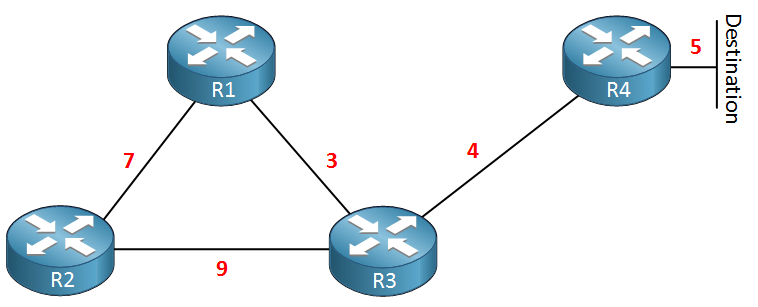EIGRP - Advertised metric is cumulative
Unlike OSPF which is a link-state routing protocol, EIGRP, a distance vector routing protocol doesn't provide a full picture of the whole network topology for each router. How then does a particular EIGRP router “know” about the cost of the whole path to the destination if it doesn’t have this information? Well, take a look at this network topology with the EIGRP metrics noted for each link:

When R4 advertises the destination network to R3, it says “my distance to the Destination is 5”. That’s the advertised distance. When R3 receives that information, it will add a value of 4 to that metric, because it knows that the cost of its link to R4 is 4. So when R3 records the metric to the destination, it will say 5+4=9.
When R3 advertises that network and its metric to R2, it will say, “my distance to the Destination is 9”. R2 will receive that and it will add a value of 9 to that, which is the cost of the local link to R3. So when R2 records the metric to the destination via R3, it will say 9+9=18.
Thus, each EIGRP router will simply add to the advertised metric the cost of the link through which the path was learned, thus obtaining a cumulative cost to the destination, without the need to “know” the topology of the whole network.
This is the logical way in which EIGRP metrics are propagated. However, to see what information is actually advertised, take a look at EIGRP - how metrics are sent in updates.